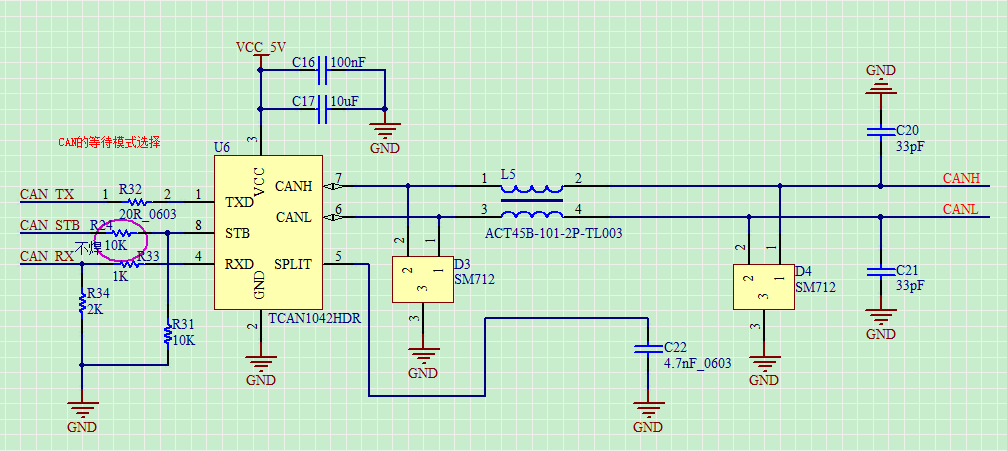Other Parts Discussed in Thread: TCAN1042H,
The front-end TVS used in the design are SM712, and there will be D4 damage. However, after replacing D4, the fault will be solved.The circuit diagram is shown in the figure
This thread has been locked.
If you have a related question, please click the "Ask a related question" button in the top right corner. The newly created question will be automatically linked to this question.
The front-end TVS used in the design are SM712, and there will be D4 damage. However, after replacing D4, the fault will be solved.The circuit diagram is shown in the figure
The EVM layout was designed to support any dual bidirectional TVS in SOT-23 package. PESD1CAN is a very common one that would fit this board. In general, though, any TVS can be chosen based on the following characteristics:
- Power rating that is appropriate for the transient immunity level required by the application
- Vrwm greater than the maximum voltage expected in the application. (For CAN it is expected for the signal lines to operate over a +/- 12 V range. Additionally, higher-voltage support is often needed in automotive applications to protect against short-circuits to battery lines.)
- Peak clamping voltage less than the maximum pin rating (in this case 70 V).
Regards,
Max